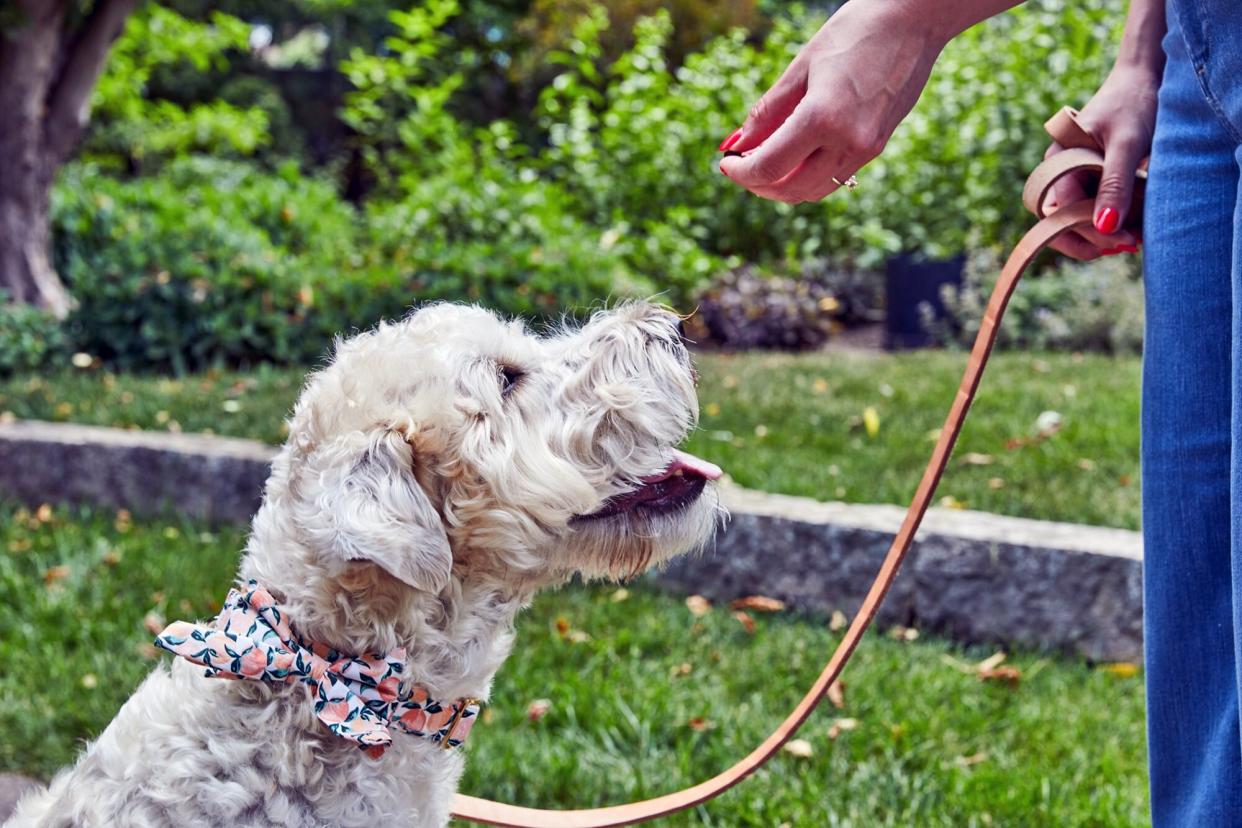3 Tips to Help Your Dog Learn Basic Cues, According to a Pro

Jason Donnelly
Adding a new pet to the family is exciting, and it means taking on big responsibilities to help them live their best life. For example, when you help your dog learn basic cues and socialization skills, this not only makes life easier (so much easier!) but also expands their potential to be happy, well-rounded, and engaged.
"Dogs really want to learn," says Gail Miller Bisher, a handler, trainer, and judge. She's also director of communications for the Westminster Kennel Club Dog Show and dog mom to an English cocker spaniel and a Vizsla. "Most dogs really take to training. It gives them something to think about."
No matter what breed you have, they're capable of accomplishing great things with your dedicated attention. Try these training pointers from Bisher.
RELATED: 5 Reasons Dog Training Makes Life Better
Be Consistent With Basic Cues
Some of the basic cues your dog should be able to follow with positive reinforcement training include:
You might need to consider crate training as an essential skill, too.
One of the most common mistakes Bisher sees is that everyone in the family isn't using the same cue. For example, if you're teaching your dog "down," someone else might be saying "get off."
"That's a problem, and it's hard to overcome," Bisher says. "It's too confusing, and they won't learn." Before you start training, make sure to go over the terms you're using for each cue and ensure everyone sticks to them.
After the "business" of learning is complete, then you can move on to the really fun tricks such as "shake" and "roll over."
Short, Repetitive Sessions Are Best
"People spend too long on a training session," Bisher says. The best thing to do is have short but frequent sessions so your dog doesn't become distracted, bored, or tired. Puppies should do well with 5- or 10-minute sessions, depending on the breed, while older dogs new to training or learning additional skills might have more success with 15-minute increments.
Repetition is key: Choose a single basic cue and work on it a few times daily for about a week. Some exceptionally smart dogs, such as cattle dogs and other herding breeds, might even be eager to try a few different skills in a day.
"Always end on a high note," Bisher says. "If 'sit' is their really strong cue, end on that and make it a big deal so your dog doesn't get discouraged."
RELATED: What Is a Marker in Training? And Why You Probably Want to Use One
Know Your Pup
After your canine pal successfully completes a skill, it's important to reward them—but you need to do it in a way they'll enjoy, Bisher says. "Some dogs are really food-driven, and they care about treats," she explains. "Other dogs couldn't care less [about food], but they want toys or just want to play with you." Simply figure out what your pup is interested in and "what makes them tick," she adds.
If you'd like to really take your pup to a higher skill level beyond the basic cues, consider partnering with a dog trainer and behavior expert.

